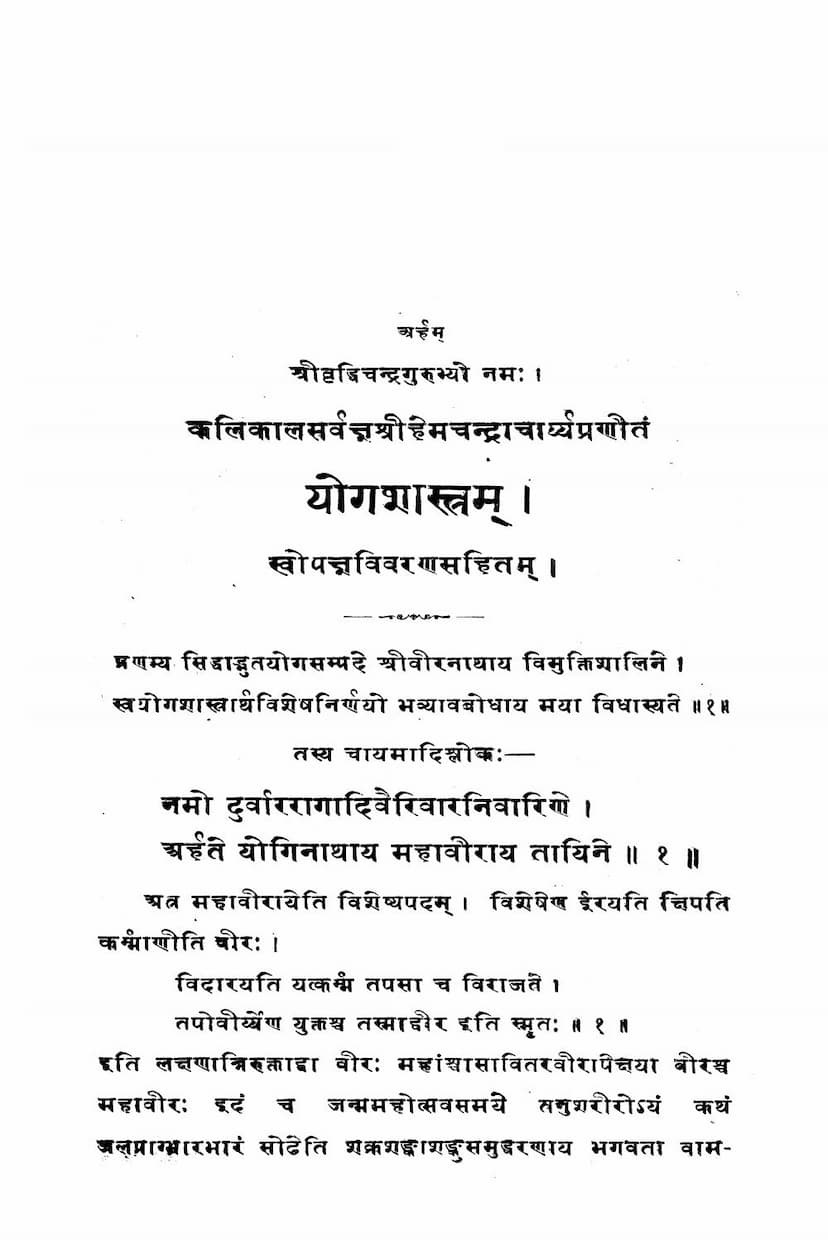Yogshastra Part 01
Added to library: September 2, 2025

Summary
This document is the first part of the Yogashastra by Acharya Hemchandracharya, with commentary by Vijay Dharmasuri, published by the Asiatic Society of Bengal.
Summary of the Content (based on the provided pages):
The text is a devotional and explanatory work focused on the teachings of Lord Mahavir, the 24th Tirthankara of Jainism. It begins with a salutation and an introduction to the importance of the Yogashastra for the spiritual upliftment of beings.
Key Themes and Content:
- Salutation to Lord Mahavir: The initial verses are a reverent tribute to Lord Mahavir, highlighting his qualities as a yogi, a conqueror of passions, and a savior. His epithets like "Veera" (heroic), "Mahavir" (great hero), "Arhat" (worthy), and "Yoginath" (lord of yoga) are explained.
- Divine Powers and Miracles: The text elaborates on Mahavir's divine powers (atiśaya) as exemplified during his birth and early life. This includes:
- The birth narrative: Describing the miraculous circumstances surrounding Mahavir's birth, including the auspicious dreams of his mother, Trishala.
- The celestial coronation: The descent of Indra and other celestial beings to perform Mahavir's divine ablution on Mount Meru.
- Demonstrations of divine strength: Mahavir's playful yet powerful actions, such as pressing Mount Meru with his toe to calm Indra's anxieties about the overwhelming force of the coronation.
- Confrontations with demons and obstacles: The text details Mahavir's encounters with various powerful beings and events intended to test or harm him, showcasing his unwavering composure, inner strength, and divine protection. These include challenges from beings taking demonic forms and attempts to disrupt his meditation and penance.
- Explanations of Mahavir's Epithets: The commentary provides detailed etymological and philosophical explanations for the names and titles attributed to Mahavir, such as:
- Mahavir: Explained through his ability to destroy karmas (karmas) and his immense courage.
- Arhat: Signifying one who is worshipped by gods, demons, and humans.
- Yoginath: Highlighting his mastery over yoga and spiritual practices.
- Dayine (Savior): Emphasizing his role in guiding beings toward liberation through his teachings.
- The Concept of Atishaya (Divine Attributes): The text explains four primary divine attributes of Mahavir: the attribute related to the cessation of afflictions (apāyāpagama), the attribute of worship (pūjā), the attribute of knowledge (jñāna), and the attribute of his discourse (vacana).
- The Nature of Yoga: The text emphasizes the profound significance of yoga as a means to overcome adversities, destroy karmas, and achieve liberation. It describes yoga as a sharp axe that cuts down the roots of suffering caused by karma.
- The Power of Penance and Virtue: Numerous examples illustrate the transformative power of penance (tapas) and virtuous living, showing how even severe afflictions are overcome through inner strength and devotion.
- The Teachings of Jainism: The foundational principles of Jainism, such as non-violence (ahimsa), truthfulness (satya), non-stealing (asteya), chastity (brahmacharya), and non-possession (aparigraha), are woven into the narrative and explanations.
- The Journey of the Soul: The text implicitly touches upon the cyclical nature of existence (samsara) and the soul's journey toward liberation (moksha) through the examples of spiritual discipline and overcoming obstacles.
- The Importance of Right Knowledge, Faith, and Conduct: The text lays the groundwork for understanding the three jewels (ratnatraya) of Jainism – right knowledge (samyak jñāna), right faith (samyak darśana), and right conduct (samyak cāritra) – as the path to salvation.
Overall Tone and Purpose:
The Yogashastra is presented as a guide for spiritual seekers, offering profound insights into the nature of reality, the path to liberation, and the exemplary life of Lord Mahavir. The detailed explanations and illustrative stories aim to inspire devotion, understanding, and the practice of virtuous conduct. The commentary by Vijay Dharmasuri clarifies the complex philosophical and theological concepts embedded within the teachings of Acharya Hemchandracharya.